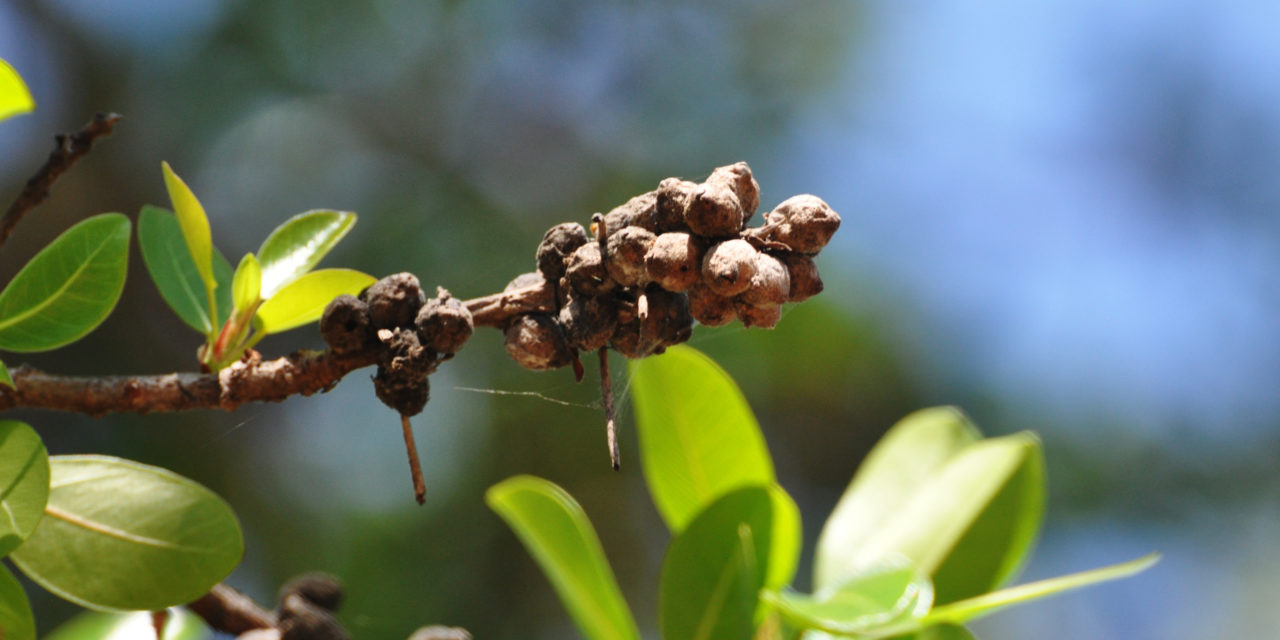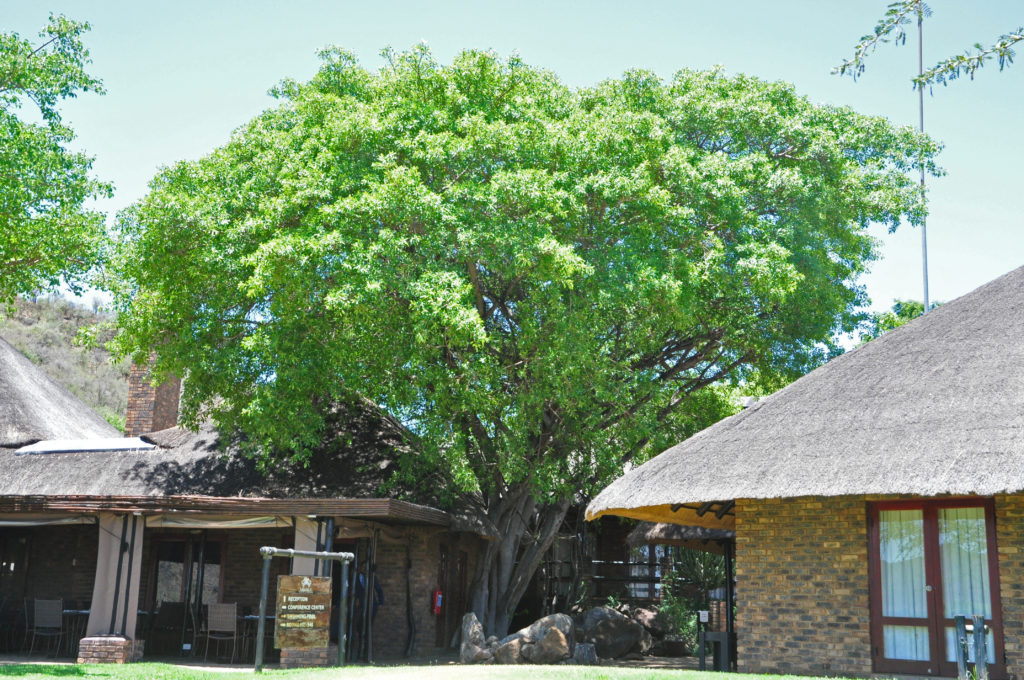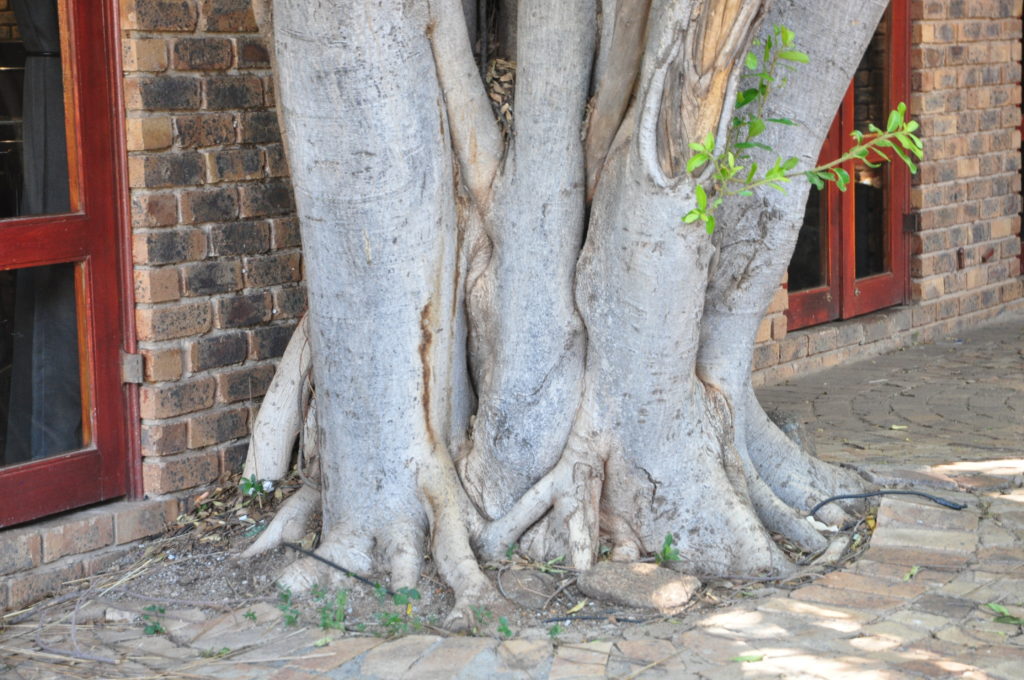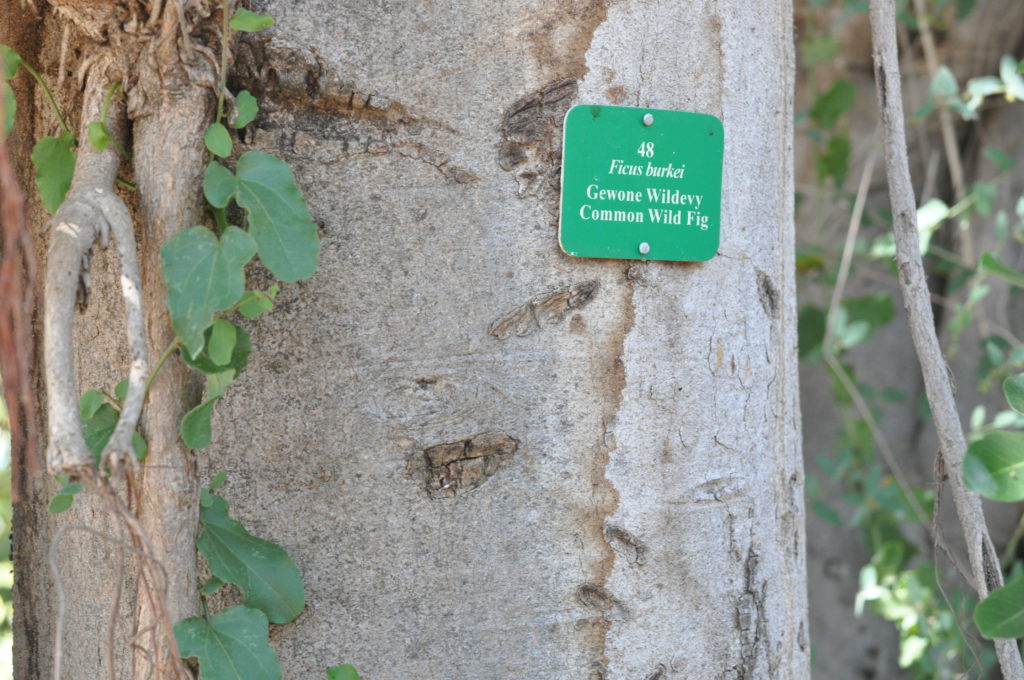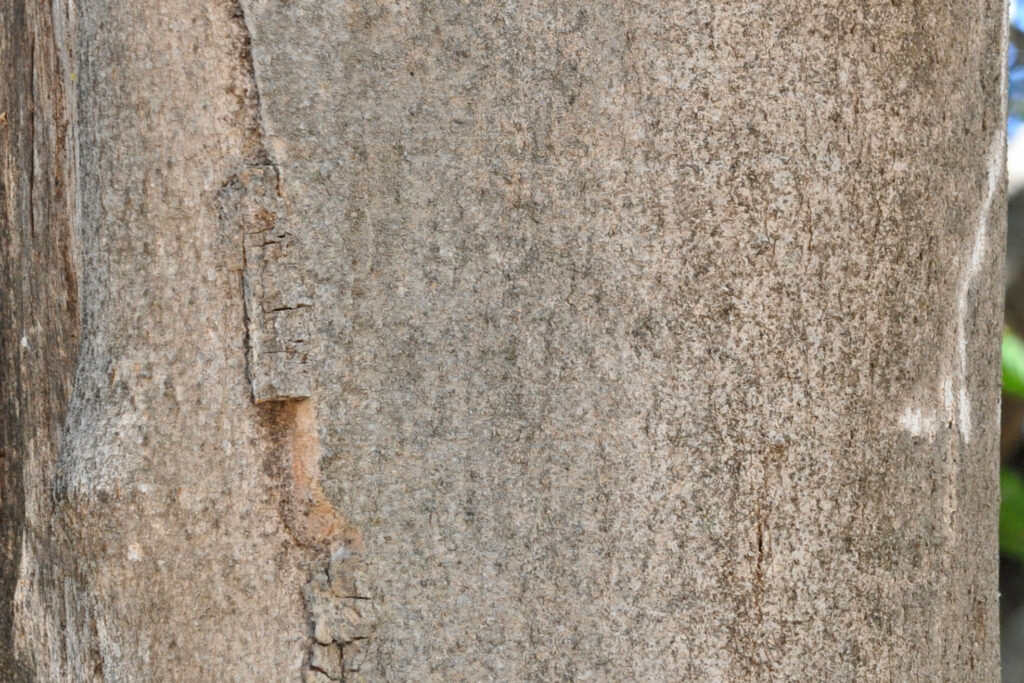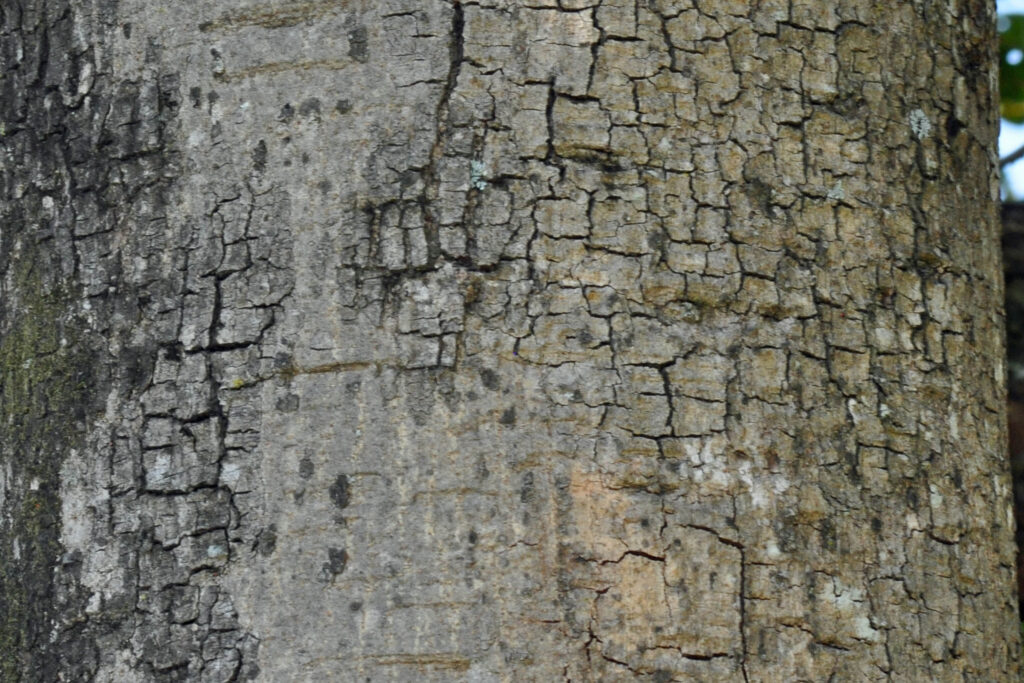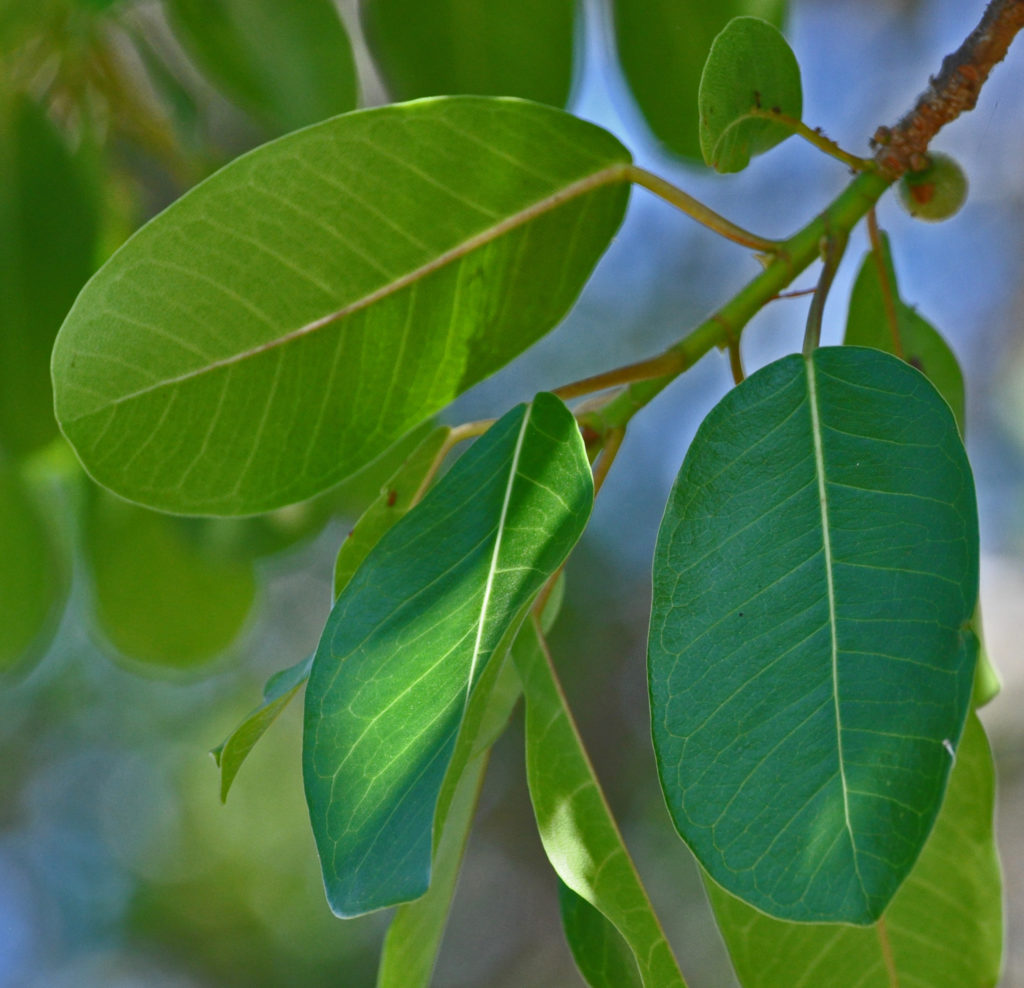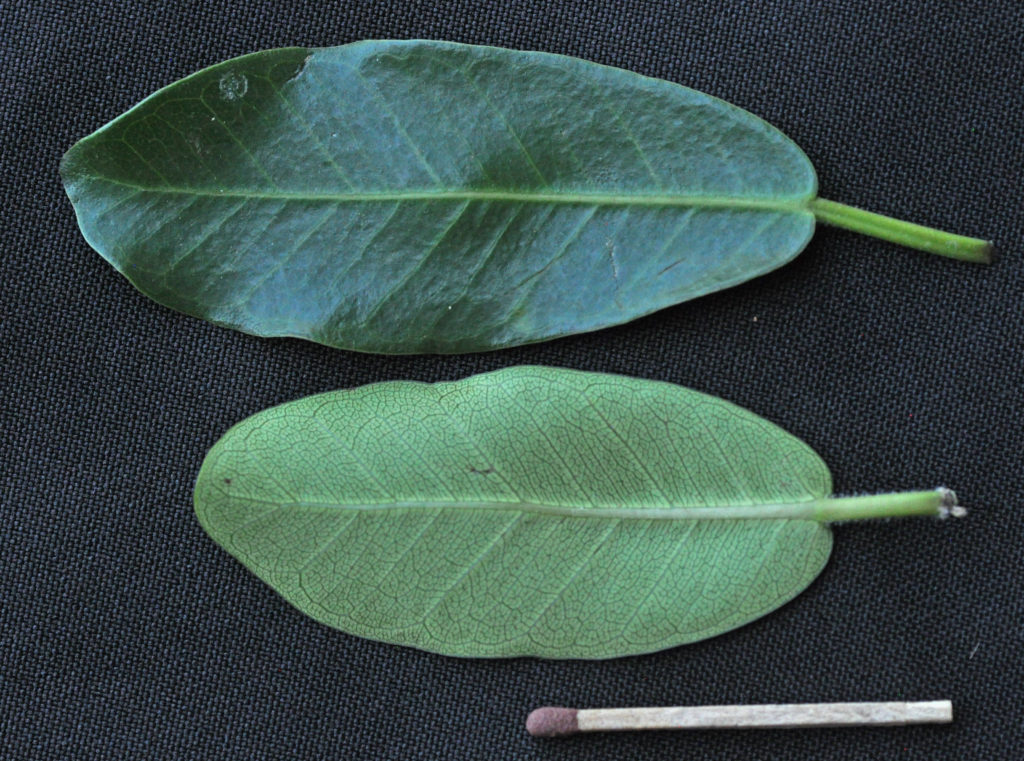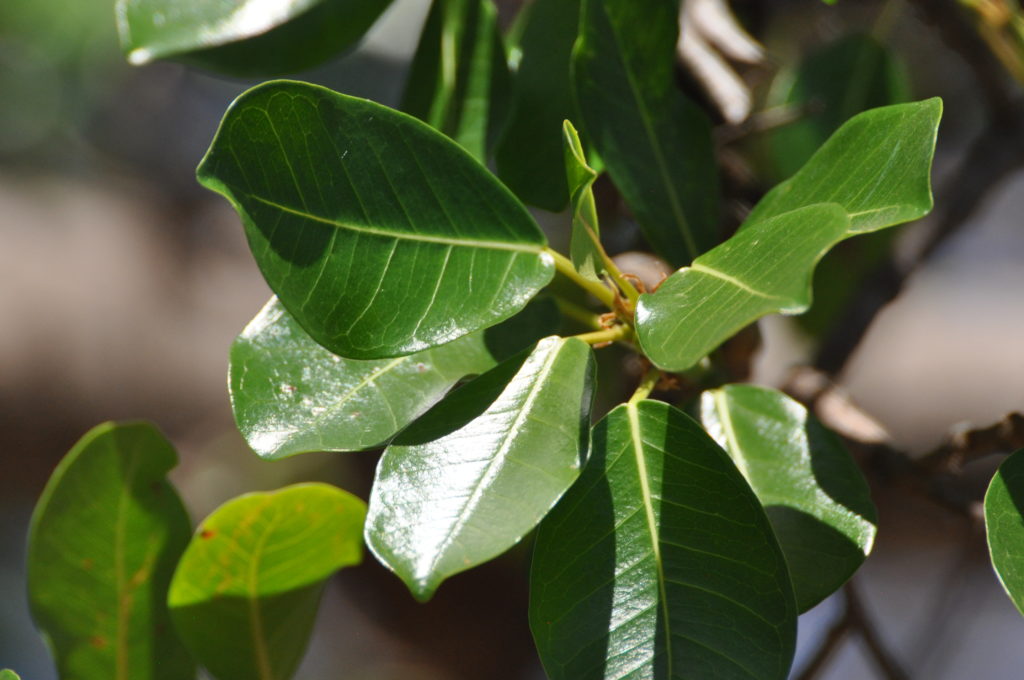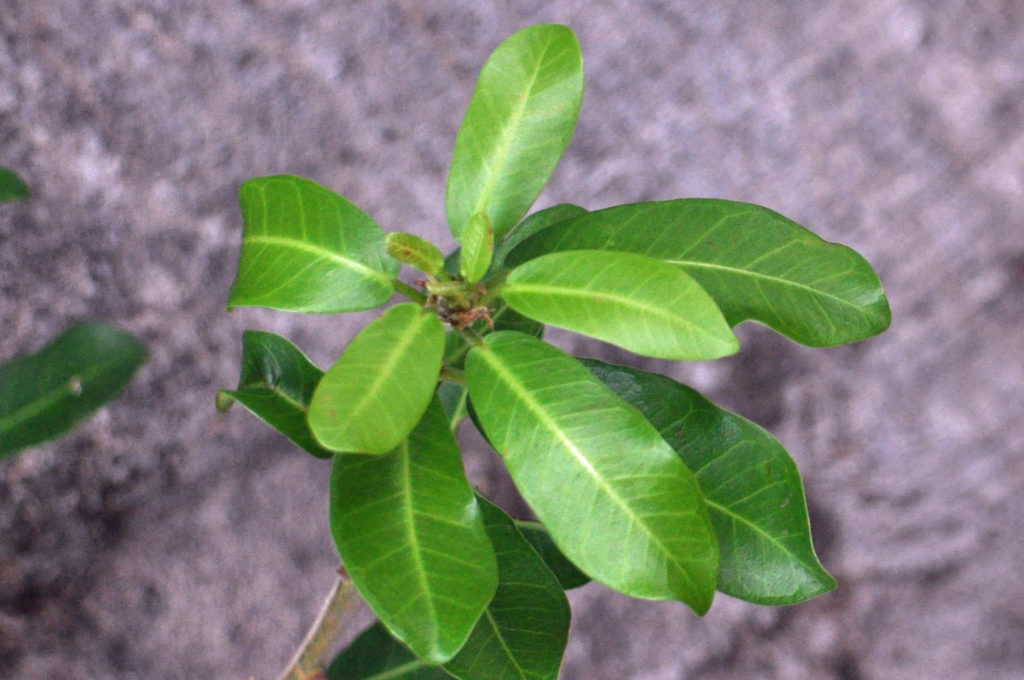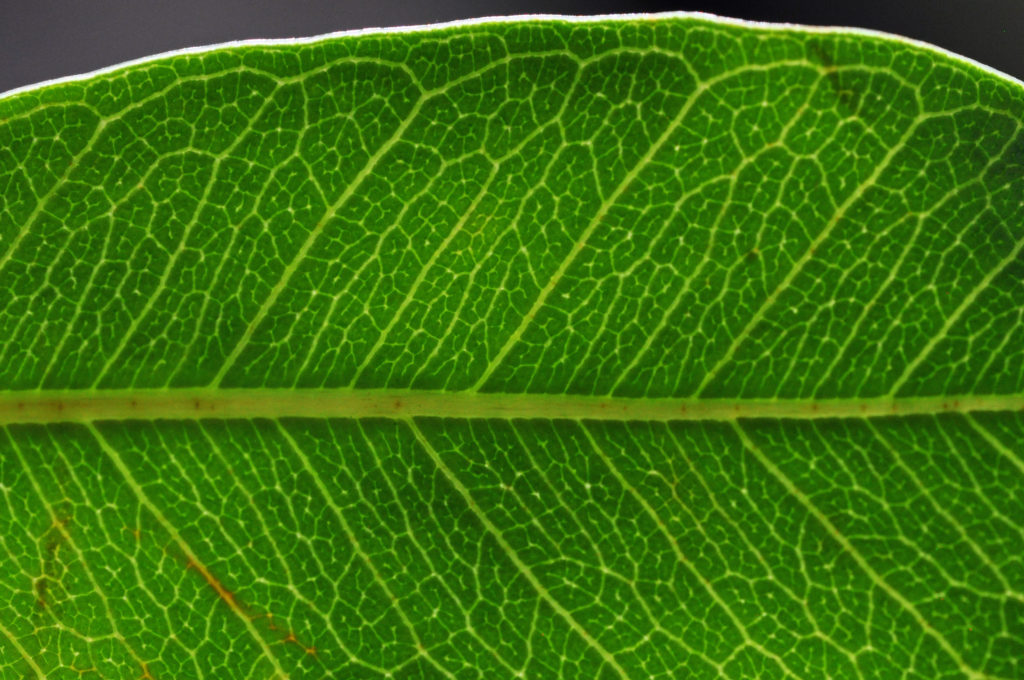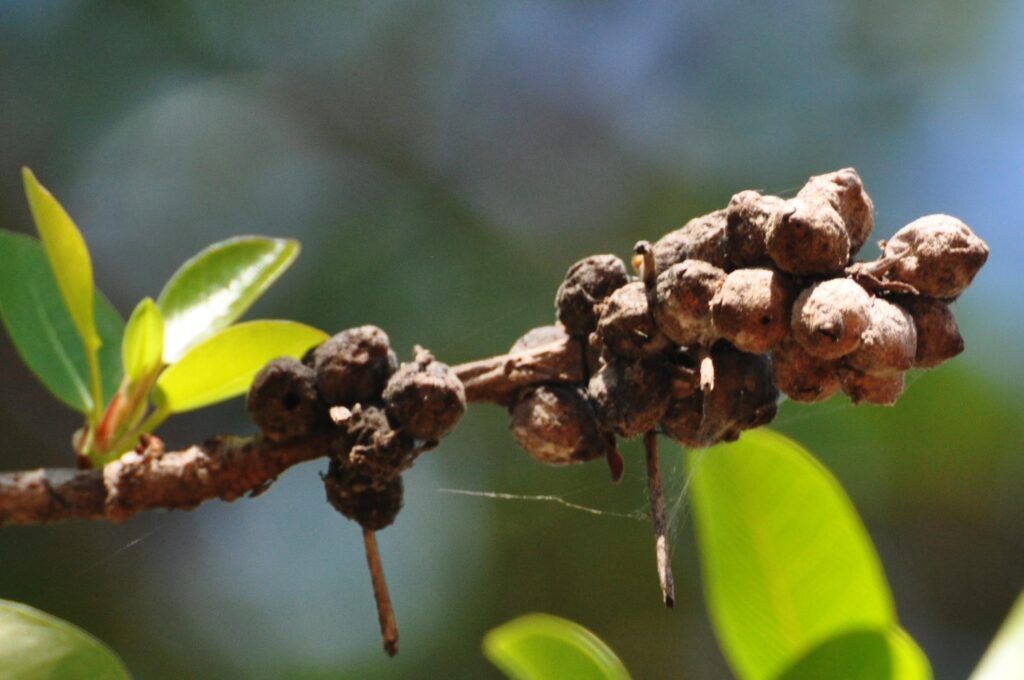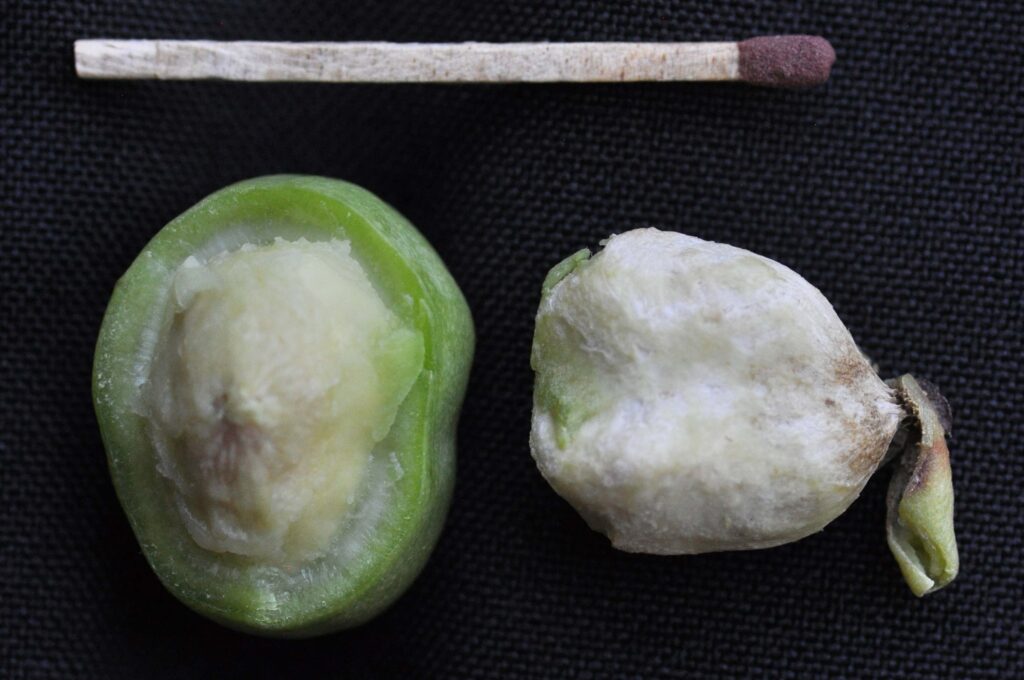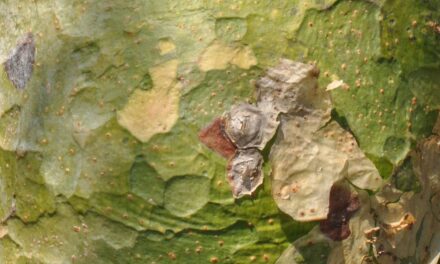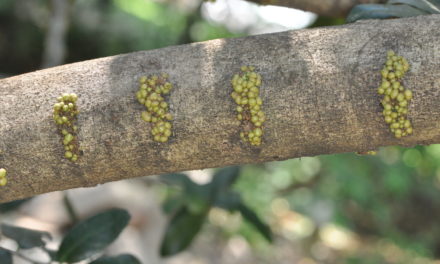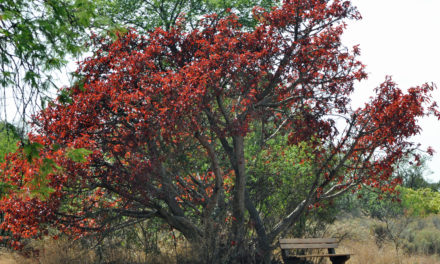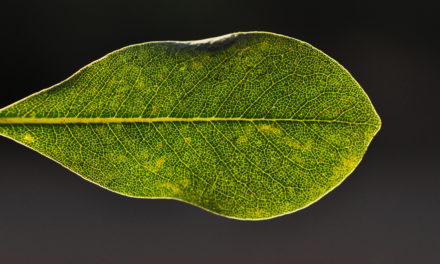General Info – summary
This symmetrical monoecious Tree is up to 18m high & may also be a rock splitter or strangler. Branches extend low down. Non-toxic milky latex is present. The alternate, hairless, glossy Leaves are simple. The minute Flowers are in a specific wasp pollinated syconium that only allows specific pollen carrying wasps to enter. The ripened Fruit is a syncarp with a roughening surface, and reddish or yellowish colour.
Description
Ficus burkei
Previous Names: Ficus thornningii (in part), Ficus natalensis, Ficus phillipsii, Ficus rhodesiaca, Urostigma burkei.
SA Tree No. 48.
Common names: (Afr) Gewone Wildevy, Wurgvy. (Eng) Common Wild Fig, Strangler Fig. (IsiNdebele) Intenjane, Umtende. (isiXhosa) Uluzi, Umthombe. (isiZulu) Umbombe, Umthombe. (Northern Sotho) Moumo. (Setswana) Mmadintana, Moomo, Moumo, Muomo, Xirhomberhome. (siSwati) inkhokhokho. (Tshivenda) Muumo.
Family: Moraceae (fig or mulberry family). Trees are evergreen and have milky or watery latex present. The simple Leaves are alternate or opposite and 3-veined from near the possibly lobed base. They are usually entire, and all leaves have stipules. Plants are monoecious or dioecious and flowers are unisexual. The Perianth of indigenous species contain sepals but no petals. Male flowers have up to 6 stamens. Female flowers are inconspicuous and lack staminodes. The superior or inferior Ovary has 1 locule with 1 ovule and 2 styles are often present. The compound usually fleshy Fruit contains various Seeds. The family has 37 genera and about 1 100 species.
Name derivation: Ficus – Latin name for fig. burkei – after Joseph Burke (1812-1873) botanist, plant and animal collector who visited Gauteng in 1841 and went on an amazing trip with many delays. His return trip from Cape Town took more than 2 years. See web reference below. The genus Ficus has 24+ species in southern Africa.
Conservation: National Status: L C (Least Concern). Assessment date: 2005 (J.E. Burrows and J.E. Victor).
Tree
The noticeably, usually symmetric, medium to large sized Tree is up to 18m high (photo 459). Initially the tree may grow on its own or be a rock splitter or a strangler (growing from a seed left by a bird on the, to be, hosts branches). If Aerial roots are present, they hang down from the branches. Here they can combine and, eventually surround, and strangle the host tree. The dense leafy Crown (photo 459) may be spreading or rounded and up to 35m wide. In older trees, the crooked Trunk may be grooved and buttressed (photo 460). The branches extend from lowdown. Cutting the tree or branches causes them to exude non-toxic milky latex. The usually smooth Bark is a light (Photo 523) or dark grey brown or khaki (photo 526). On younger branches, Lenticels (a usually raised corky oval or elongated area on the plant that allows the uncontrolled interchange of gases with the environment) may be visible in vertical lines.
- 459. 2018/11/12. Bakubung. Photo: David Becking.
- 460. 2018/11/12. Bakubung. Photo: David Becking.
- 523. 2014/09/08. Lower Sabi KNP. Photo: David Becking.
- 526. 2014/09/08. Lower Sabi KNP. Photo: David Becking.
- 726. 2014/09/14. Lowveld BG. Photo: David Becking.
Leaves
Leaf shape is variable. The alternate (photo 527) or whorled and usually hairless, leathery and stiff Leaves are dark green, and slightly glossy above (photo 525). They are lighter below and the margin is entire (with a continuous margin, not in any way indented). Young leaves are a lighter green (photo 718). Leaves are simple (have a single blade which may have incisions that are not deep enough to divide the blade into leaflets), and smooth – not rough nor sandpaper-like. The tree may be evergreen or briefly deciduous. This is largely weather dependent. Leaves are oblong or elliptic to obovate (photo 476) and up to 12 x 5,5cm. The Upper surface is slightly glossy, velvety or smooth with the clearly visible Midrib that reaches the leaf apex. The midrib protrudes on the Lower paler Surface and may be yellowish. Veins are best viewed when the leaf is held against a strong light. Here a hand lens will help. Parallel Lateral veins loop and join close to the margin (photo 481) forming a sub-marginal vein (photo 481). These leaves are not markedly 3-veined from the base. The Apex is rounded or bluntly pointed. The Base tapers and becomes rounded, square or lobed (photo 476). The Petiole (leaf stalk) is hairy, indented lengthwise above (photo 476) and usually close to 5cm long. Stipules (basal appendages of the petiole) may be visible.
- 527. 2014/09/08. Lower Sabi KNP. Photo: David Becking.
- 476. 2018/11/22. Bakubung. Photo: David Becking.
- 525. 2014/09/08. Lower Sabi KNP. Photo: David Becking.
- 718. 2018/11/23. Bakubung. Photo: David Becking.
- 481. 2018/11/22. Bakubung. Photo: David Becking.
Flowers
This tree is monoecious (having both male and female reproductive organs on the same plant). The unisexual Flowers are very small. Figs possess an amazingly arranged flower head called a Syconium. Essentially this consists of a receptacle (is that expanded tip of the flower stalk from which the floral parts develop. This is greatly expanded in the Asteraceae (Compositae) and in Ficus). Here the perimeter of the receptacle substantially increases in size and folds over forming the fig shape. The hollow fig ends with a tiny opening called an Ostiole, which is covered with scales making exit for wasps impossible and entrance difficult. Only the female pollinating wasps (here Elisabethiella stuckenbergi, Alfonsiella longiscapa or Elisabethiella socotrensis) attempts to do so and are usually injured in the process. Around the inner boundary of the hollow receptacle of the fig, a large collection of extremely small flowers develops. These flowers are either male or female. In the Male flowers, up to 6 overlapping perianth (the 2 floral envelopes considered together; a collective term for the calyx and corolla) lobes and one or 2 stamens are present. The ovary is absent or vestigial (imperfectly developed, non-functional relic from the past and is usually smaller). In the Female flowers, there is a free Ovary and 1 or 2 Styles. The Stigma is usually oblong. There are no stamens and usually fewer perianth lobes.
The Female wasp enters the fig through the ostiole with her pollen sacks laden with pollen and, unintentionally, pollinates those female fig flowers that have longish styles. These longer styles prevent the wasp from laying eggs in the ovary. The wasp thus targets the flowers with short stigmas and lays a single egg in each one. The female ovary react producing a gall which nourishing the developing larvae. They eventually pupate and becomes adults. The robust Male wasps develop first and fertilize the young Female wasps. Male wasps then burrow through the wall of the fig and allow oxygen in. The young female wasps then, unintentionally, load pollen from the male flowers, escape from the fig and make their way to another fig of the same species, to continue the life cycle. This is an excellent example of a mutualistic relationship (a beneficial relationship between 2 different species in which both benefit). Here both the fig tree and the wasp benefit. There are at least 28 different – usually fig specific species of wasps involved in pollination of different fig trees.
Fruit
Nearly a week elapses after the wasps escape and leave behind the now fertilized fig eggs. Oxygen enters through the holes created by the exiting wasps and this induces the production of Ethylene. Ethylene is a small hydrocarbon gas – odourless and tasteless. This gas is involved in the ripening of the fruit – including causing the fruit to change colour, texture and soften. Ethylene is used commercially to ripen fruits like tomatoes, bananas and pears. The Figs now ripen (up to 2cm wide) and develop into a multiple rosy speckled brown Fruit. They occur just below the leaf or in leaf axils. The opening is often nipple like and, at maturity, they become a bit rough and a slightly reddish or yellowish colour. The fruit is born singly or in pairs and remains on the tree for most of the year (photo 524). It is an almost spherical or pear-shaped Syncarp (having united carpels: applied to an ovary of 2 or more carpels), is up to 1,5cm wide and is usually sessile (without stalks). When present, the stalks may reach up to 7mm long. The fig Surface is smooth, initially green and usually densely hairy and attached to a saucer-shaped thickened basal plate.
- 524. 2014/09/08. Lower Sabi KNP. Photo: David Becking.
- 480. 2018/11/22. Bakubung. Photo: David Becking.
Distribution & Ecology
These Trees are common in forests and Savanna (is a rolling grassland scattered with shrubs and isolated trees) regions. The tree also develops on termite mounds. Trees usually occur in mid altitudes below 1 800m on rocky hillsides, in deciduous forests and semi deciduous woodlands. In South Africa, they occur naturally in Eastern Cape, KwaZulu-Natal, Gauteng, Mpumalanga, Limpopo, and North West. Trees are also found in Mozambique, Zimbabwe, Botswana, Swaziland, Uganda, Kenya, Tanzania, southeastern Democratic Republic of Congo, Zambia and Malawi. This tree may be terrestrial, a strangler or a rock-splitter. Birds, including the African Green Pigeon, feed on the fruit. The insects feeding on the fruit attract other birds. These include the Black Sunbird, Crested Loerie (Turaco), the Saw-wing Swallow and the Paradise Flycatcher. Mammals, including fruit bats, baboons, bushpigs, monkeys, warthogs, bushbuck, nyala, duiker and klipspringer also feed on the ripe Figs. Larval stages of the Tiger moth caterpillar (Asota speciosa) and butterflies- including the Lesser Fig-tree Blue (Myrina dermaptera), the Common Fig-tree Blue (Myrina silenus) as well as the Lesser Fig-tree Blue butterfly (Myrina dermaptera dermaptera) all have larval leaf feeders.
Ethnobotany
When growing on rocks the white stem, and roots growing over rocks are distinctive. The tree is slightly frost sensitive. The Figs are edible. This is a good birders tree and shade provider. The soft Wood has a low density and is whitish, weak and susceptible to borer attack. Bark fibres are used for cordage (making cords and ropes) and mat making. Pounded Root extract is very sticky and used for trapping hares and birds. It is also smeared on grass to trap guineafowl. This shade producing and bird attracting plant grows easily from truncheons (stem cutting from a selected plant – used to produce genetically identical new plants but here requires ample space).
References
Boon, R. 2010. Pooley’s Trees of eastern South Africa. Flora and Fauna Publications Trust, Durban.
Burrows, J.E. & Victor, J.E. 2005. Ficus burkei (Miq.) Miq. National Assessment: Red List of South African Plants version 2020.1. Accessed on 2023/06/03.
Burrows, J.E., Burrows, S.M., Lotter, M.C. & Schmidt, E. 2018. Trees and Shrubs Mozambique. Publishing Print Matters (Pty) Ltd. Noordhoek, Cape Town.
Coates Palgrave, M. 2002. Keith Coates Palgrave Trees of Southern Africa, edn 3. Struik, Cape Town.
Ginn, P.J. McIlleron, W.G. Milstein, S. 1989. The Complete Book of Southern African Birds. Struik Publishers (PTY) LTD. Third impression 1991.
Lawrence, G. H. M, 1951. Taxonomy of Vascular Plants, The Macmillan Company, New York. Tenth Printing 1965.
Palmer, E. & Pitman, N. 1972. Trees of southern Africa, Balkema, Amsterdam, Cape Town.
Schmidt, S. Lotter, M. & McCleland, W. 2002. Trees and Shrubs of Mpumalanga and the Kruger National Park.
van Wyk, B. & van Wyk, P. 1997 Field guide to Trees of Southern Africa, Struik, Cape Town.
http://www.digplanet.com/wiki/Joseph_Burke_(botanist)
http://www.blueplanetbiomes.org/savanna.htm
https://www.biomedcentral.com/content/supplementary/1471-2148-12-1-s5.pdf
http://posa.sanbi.org/flora/browse.php?src=SP

